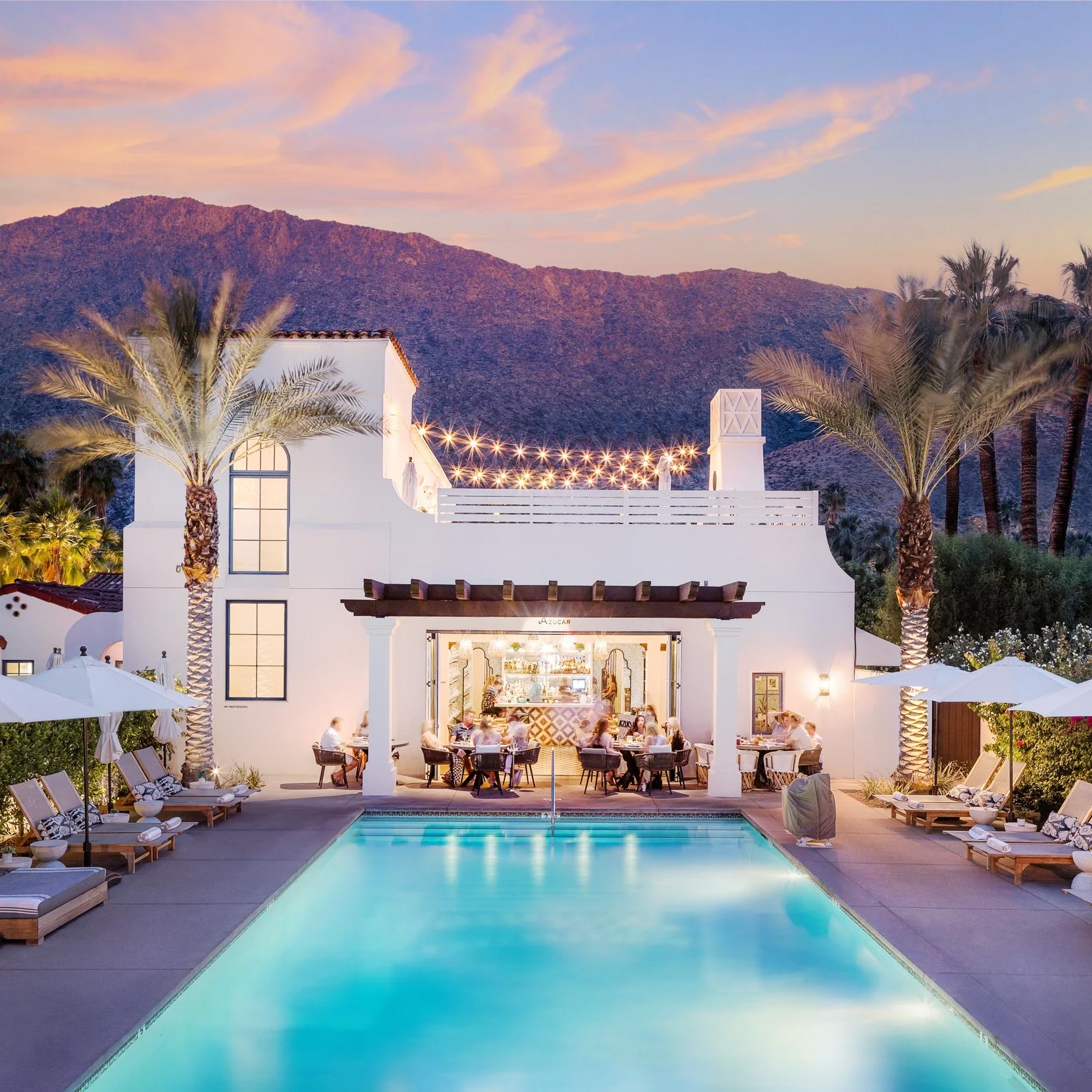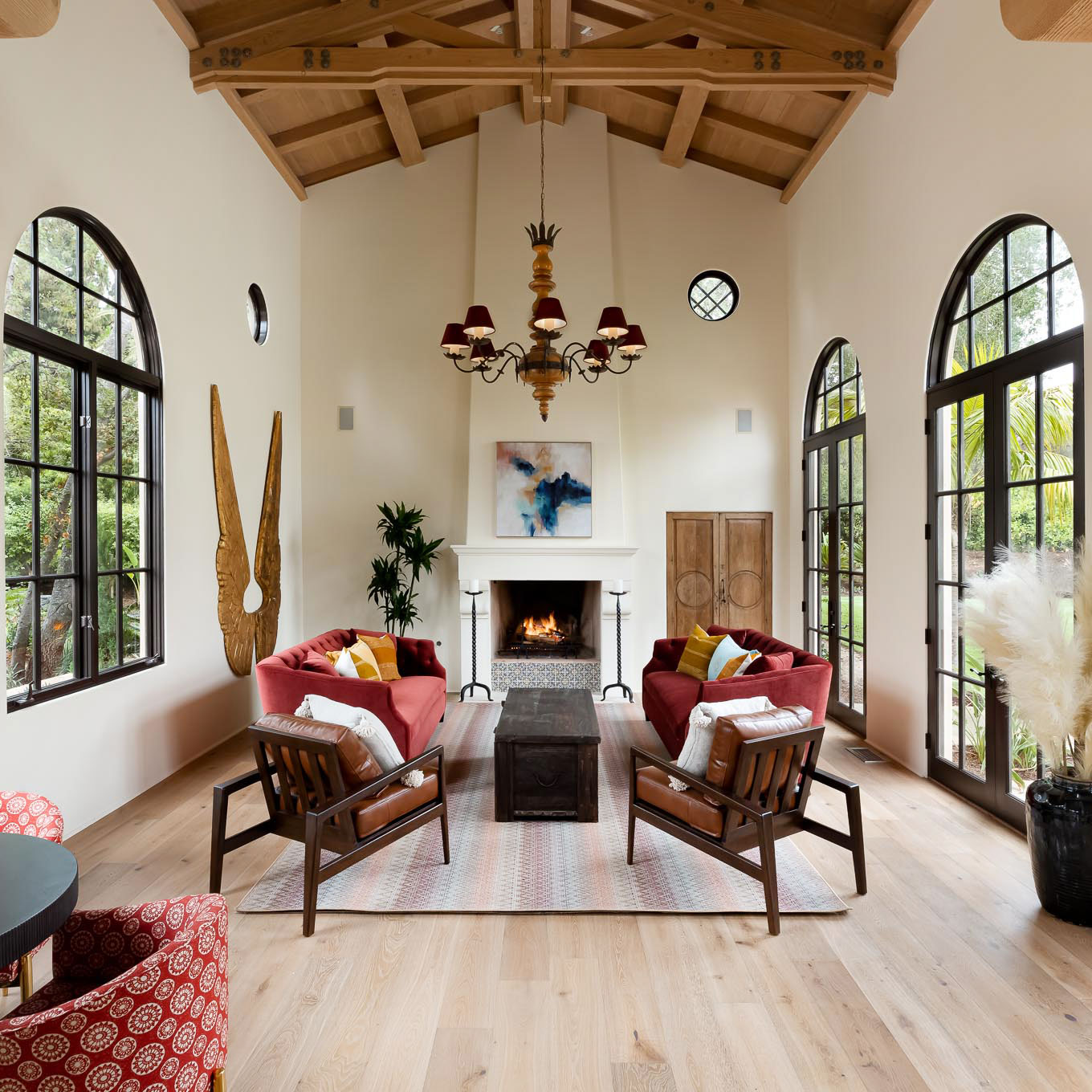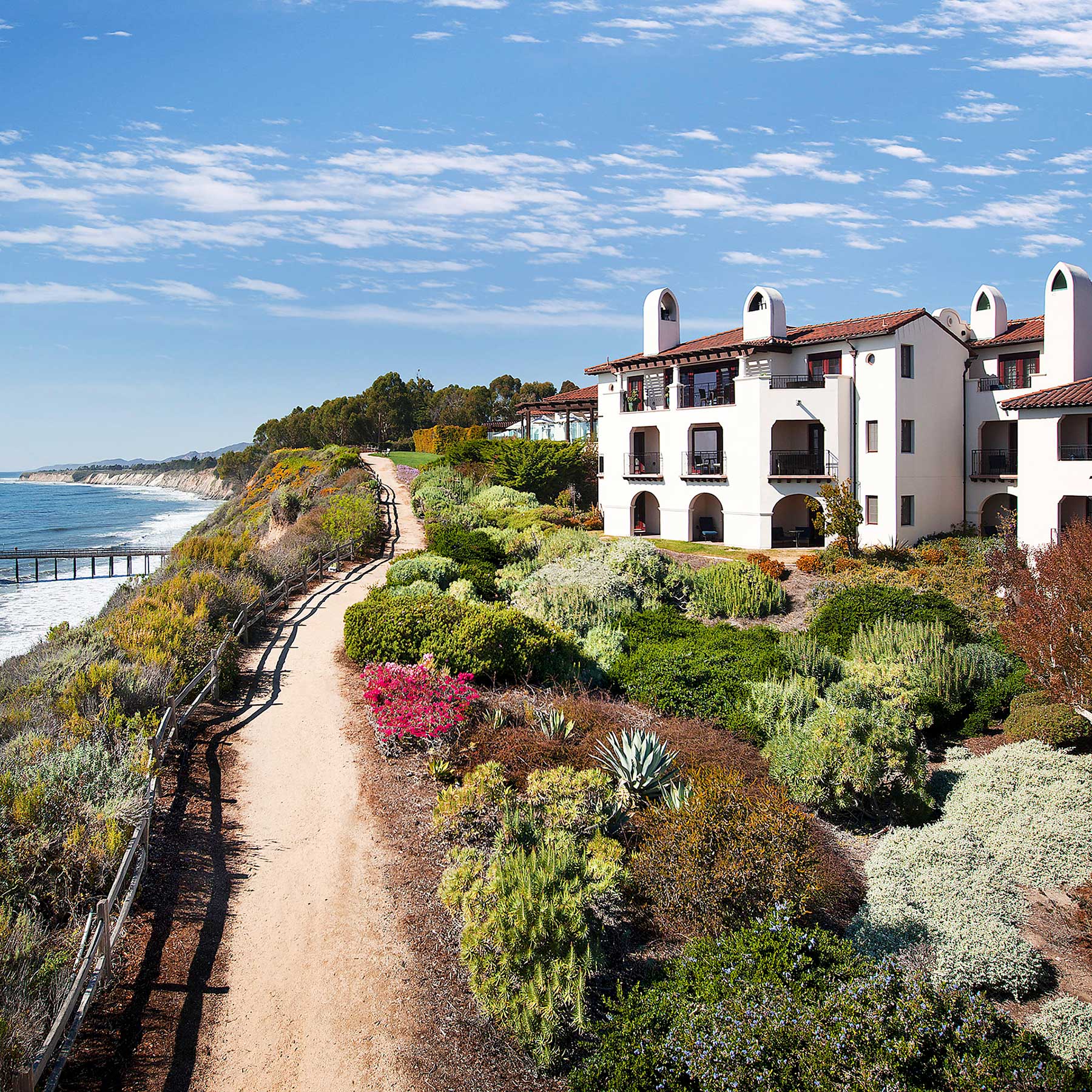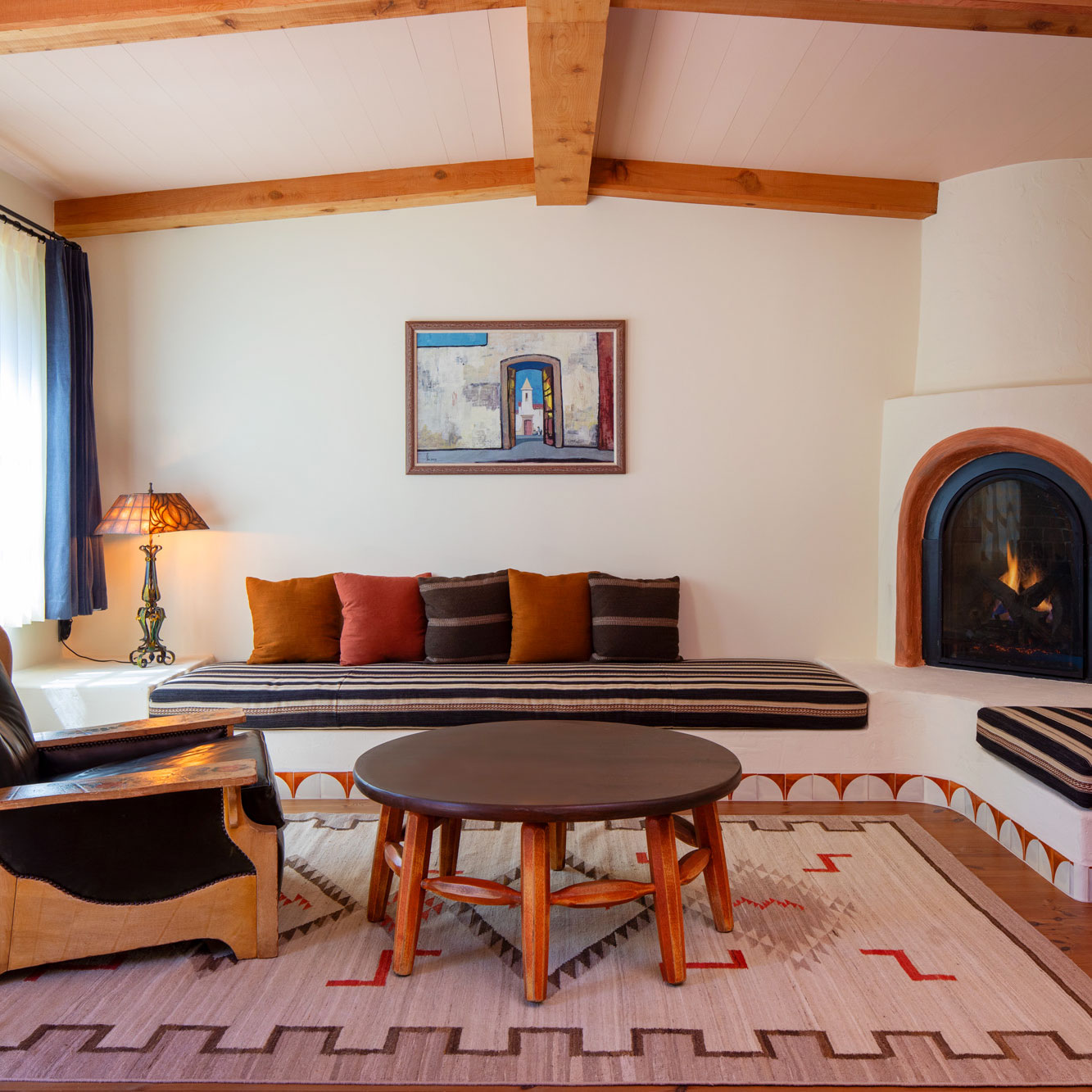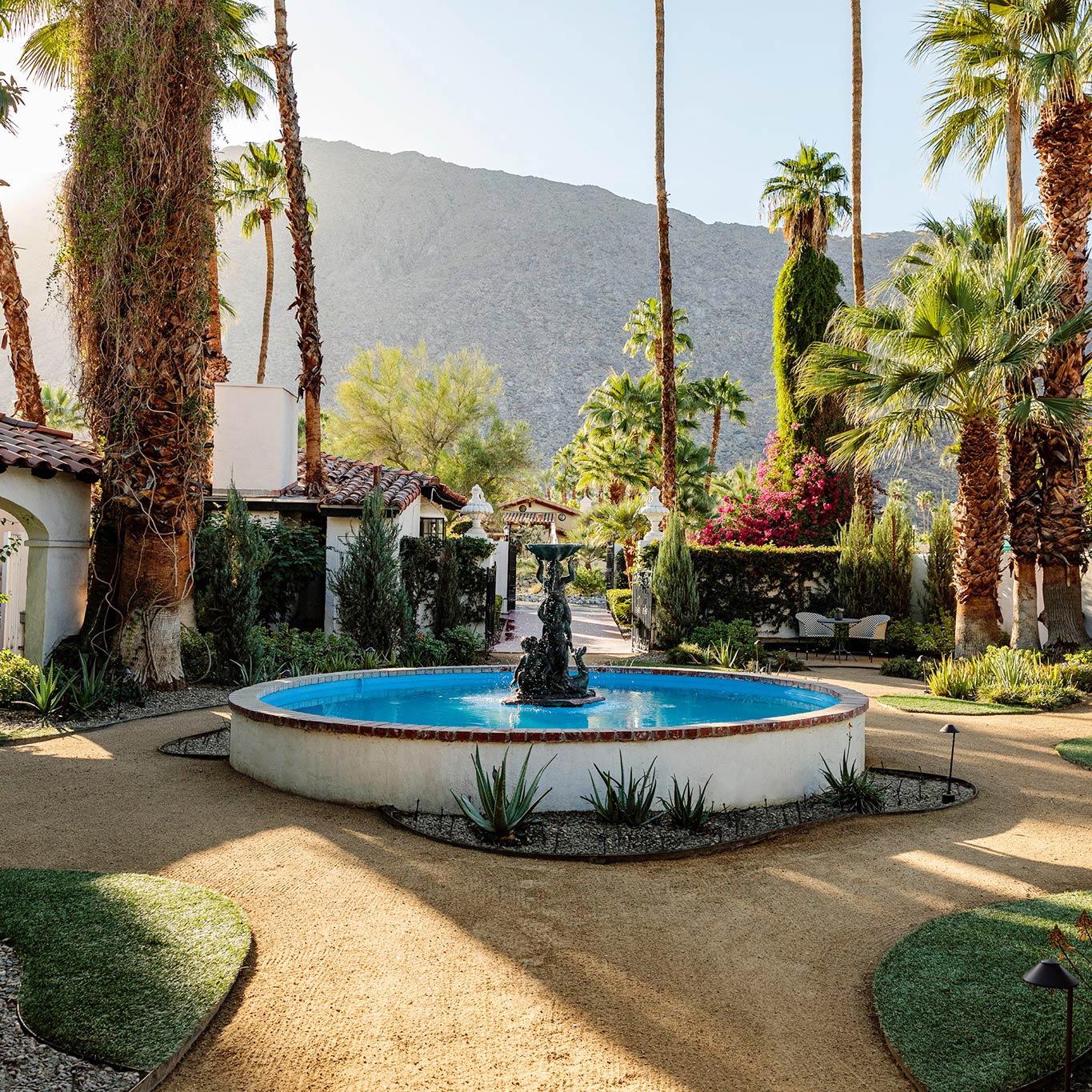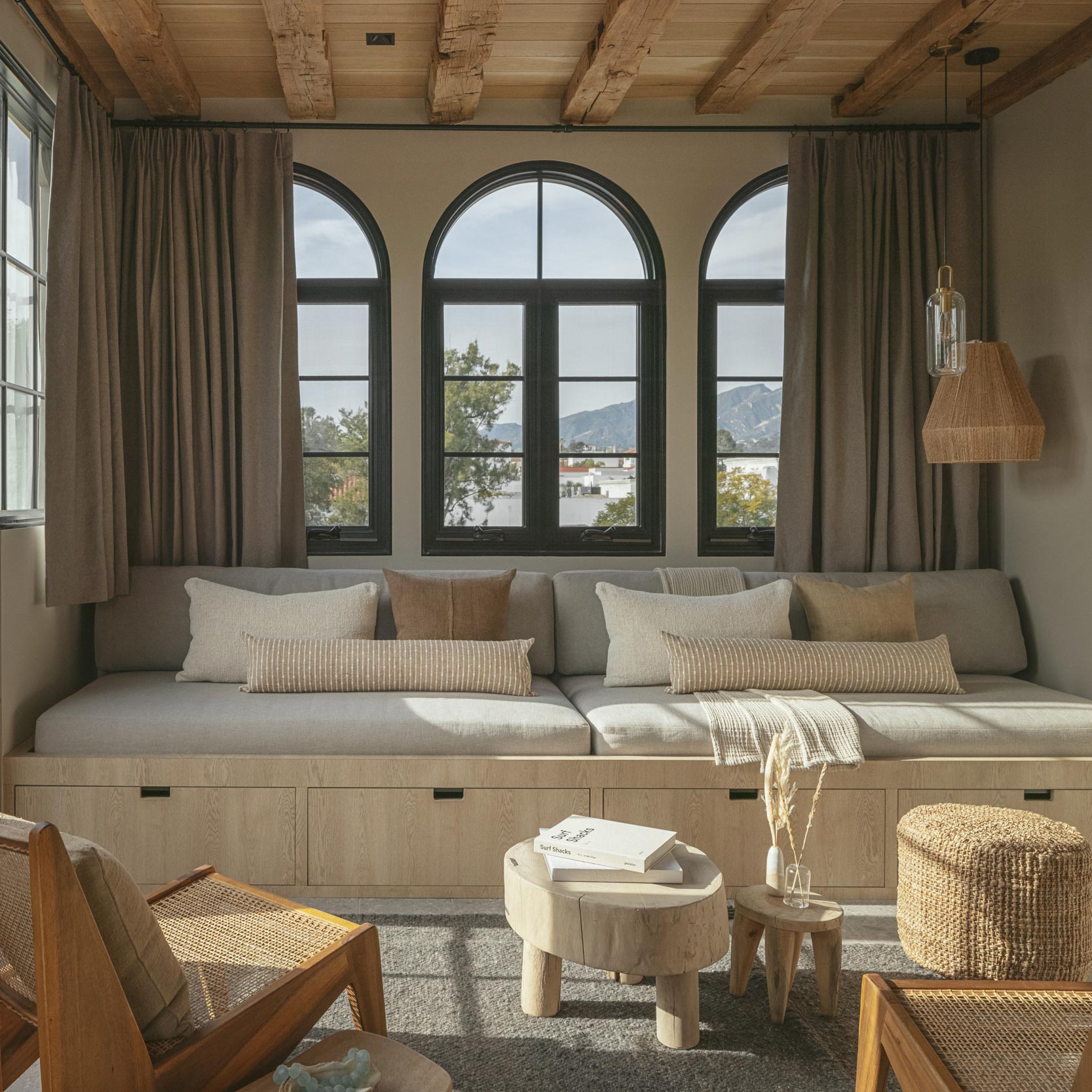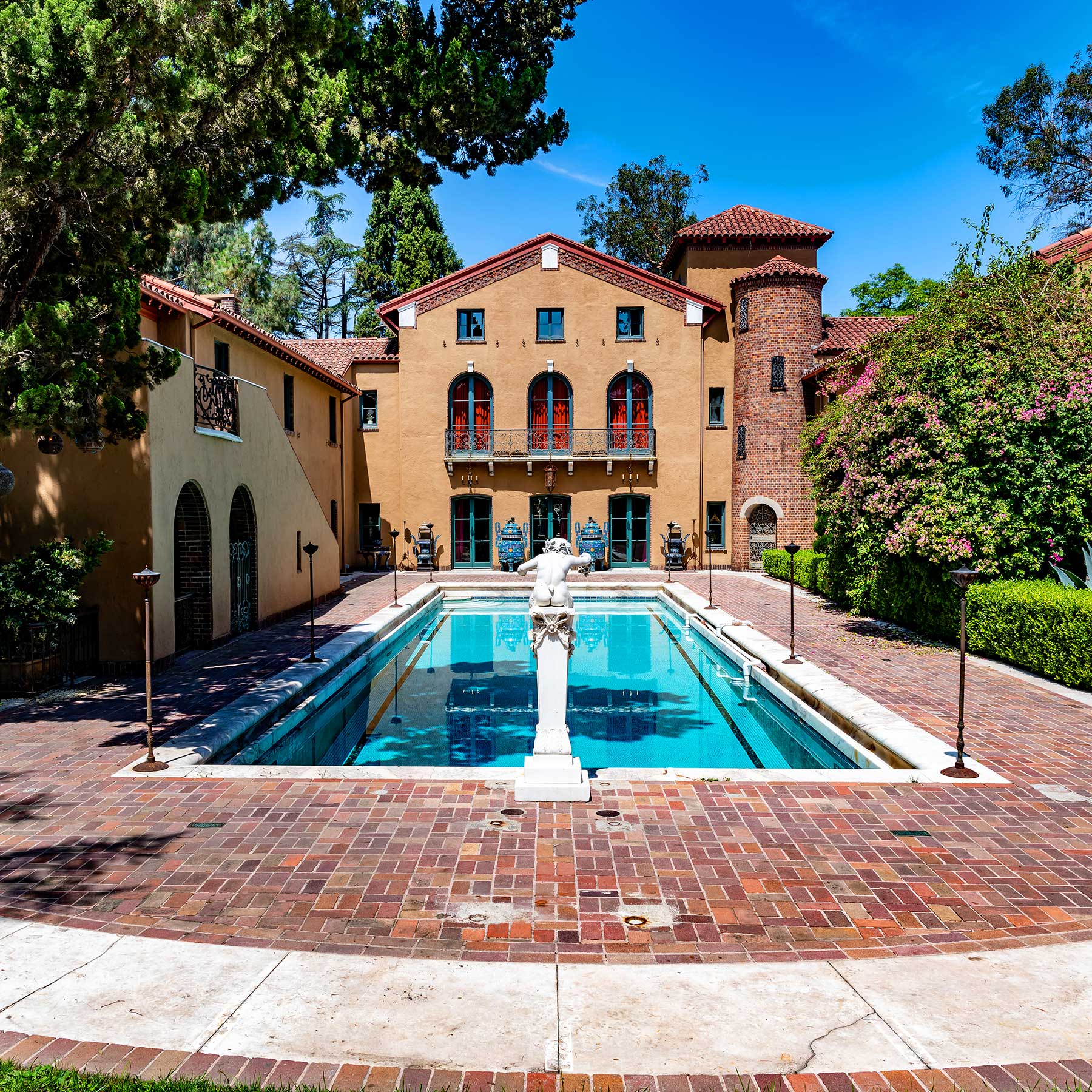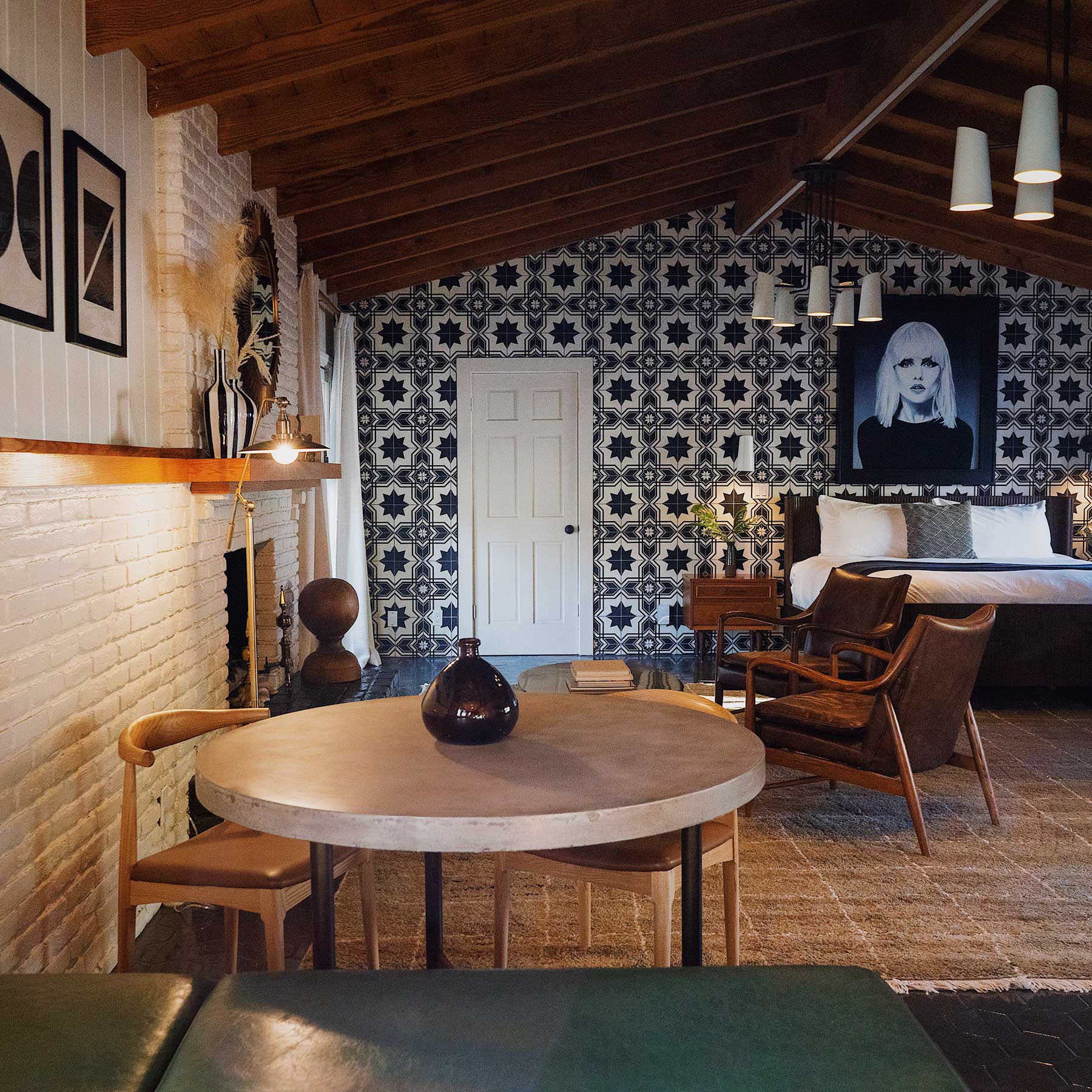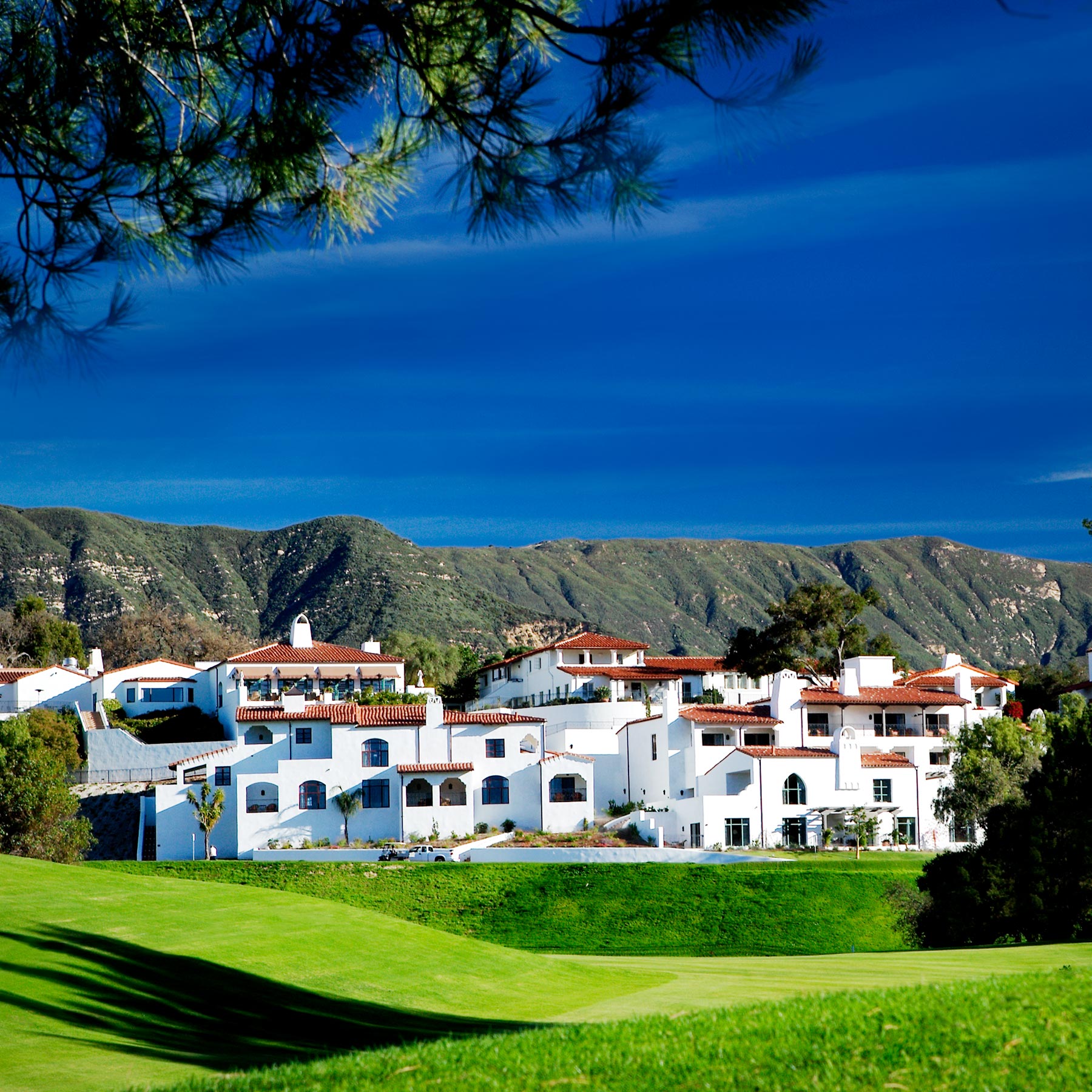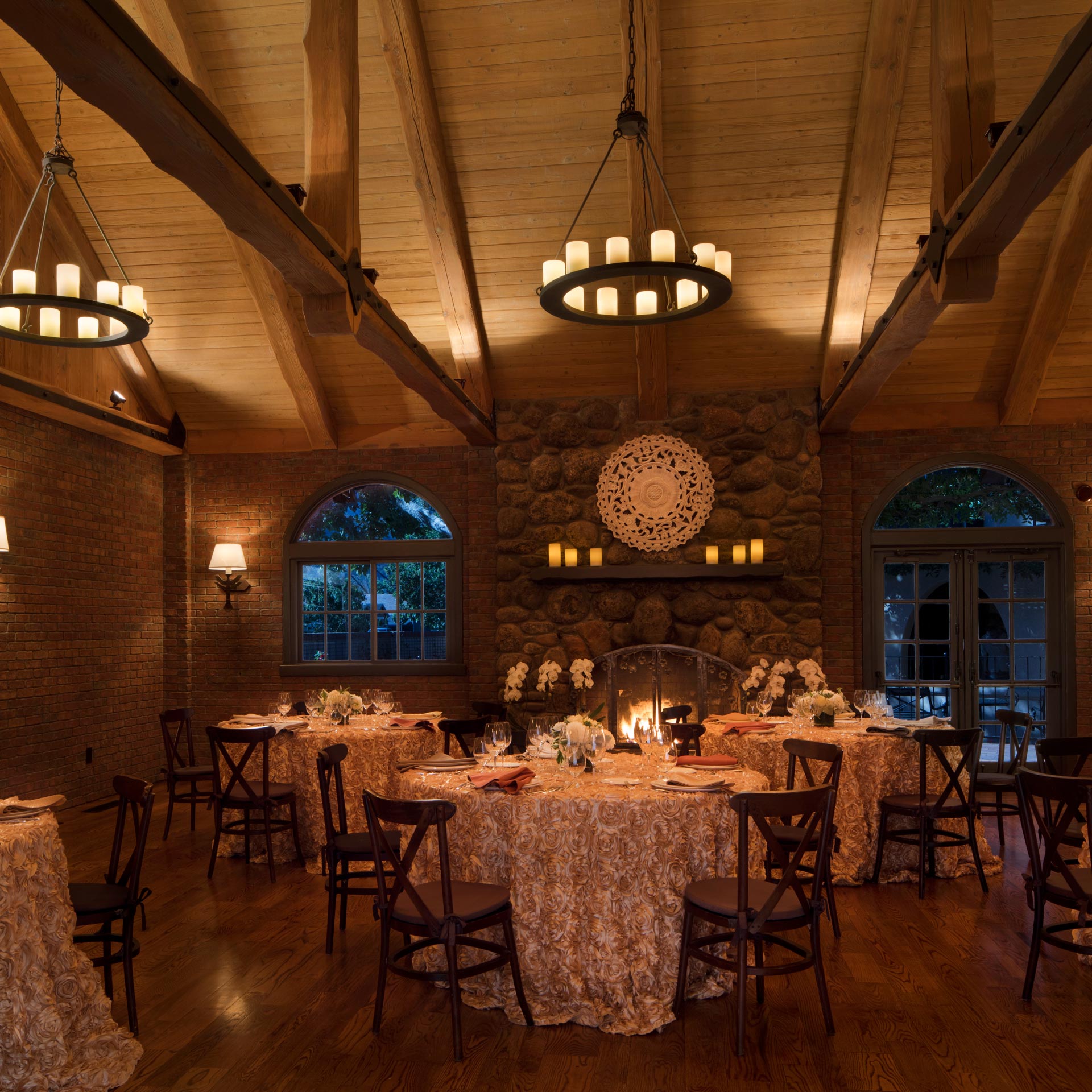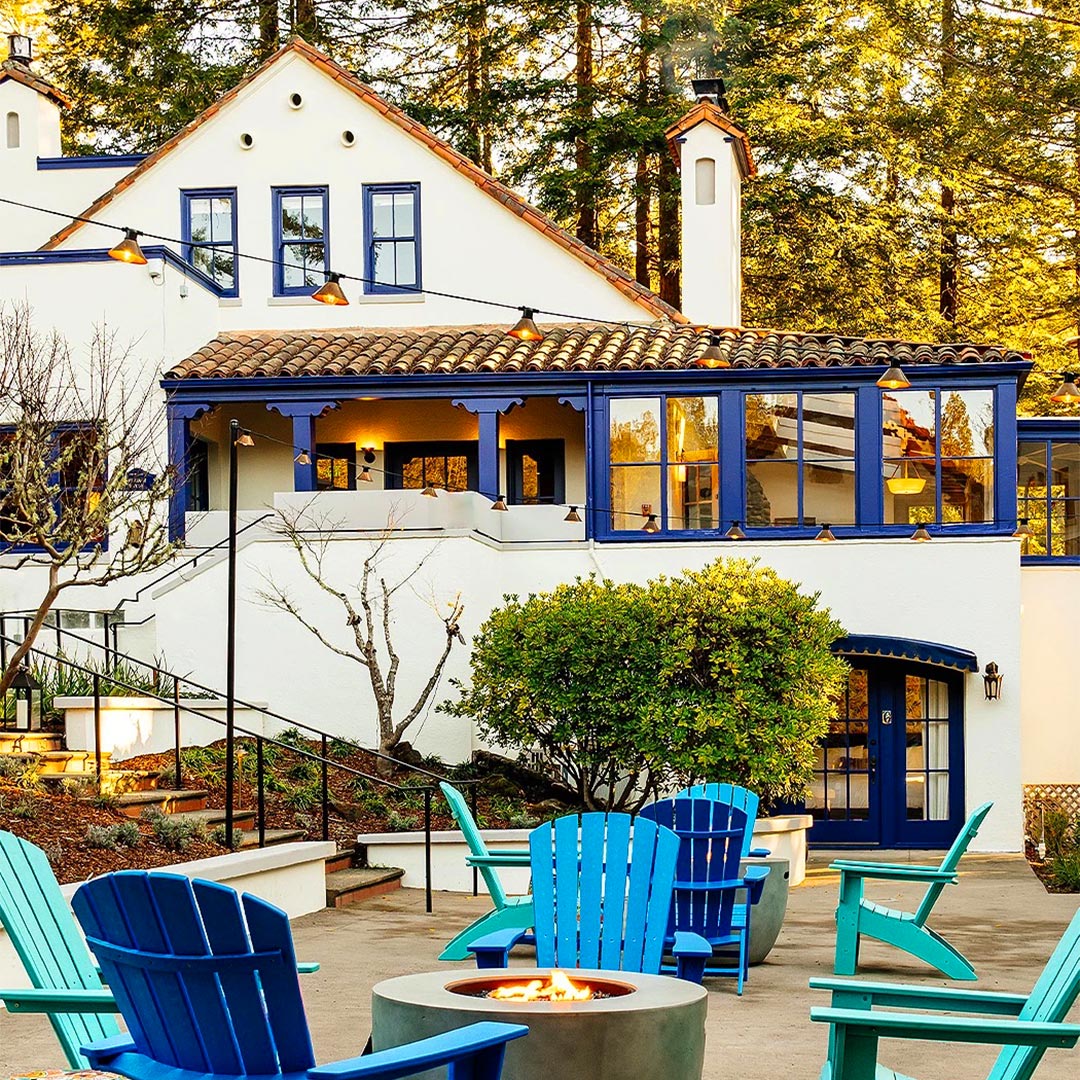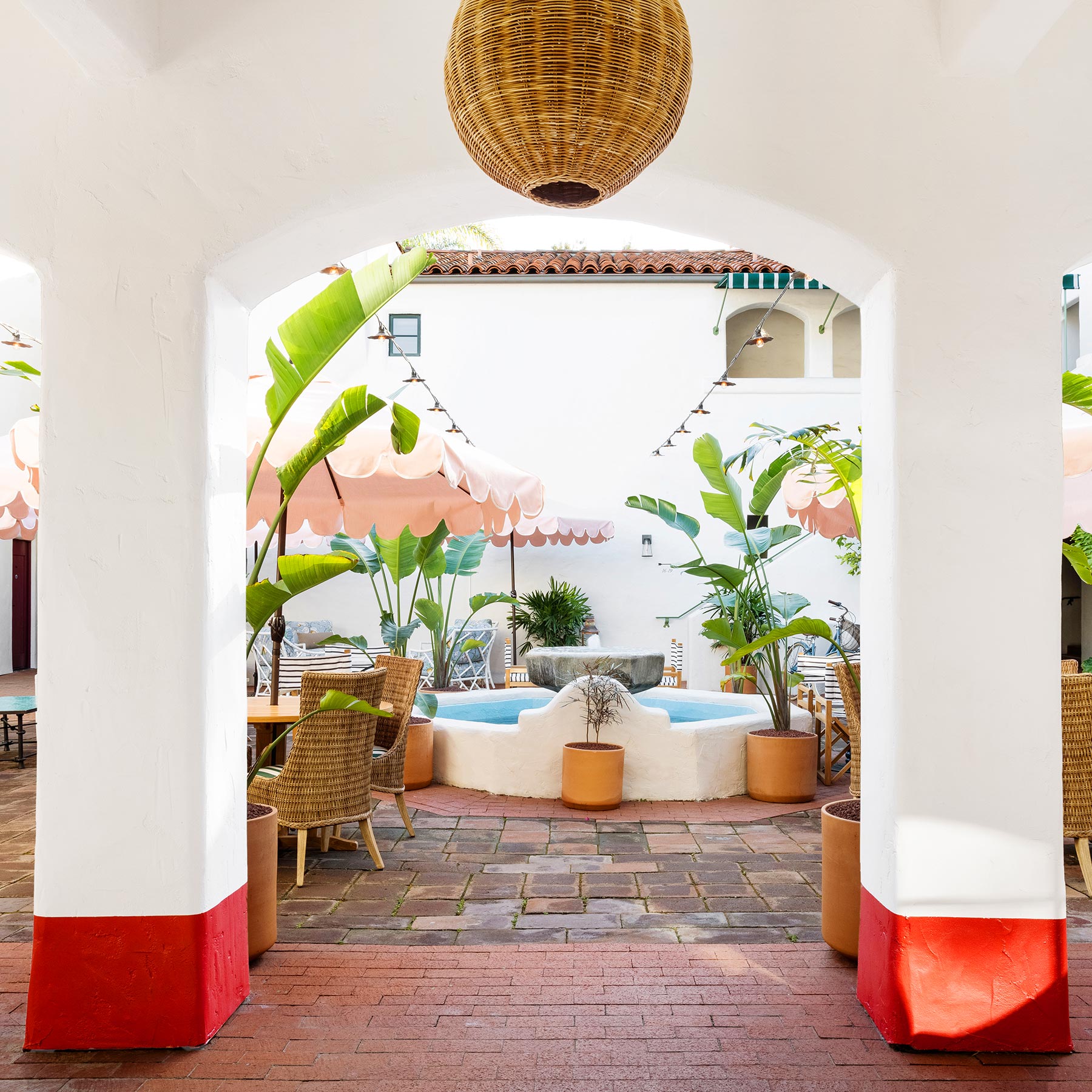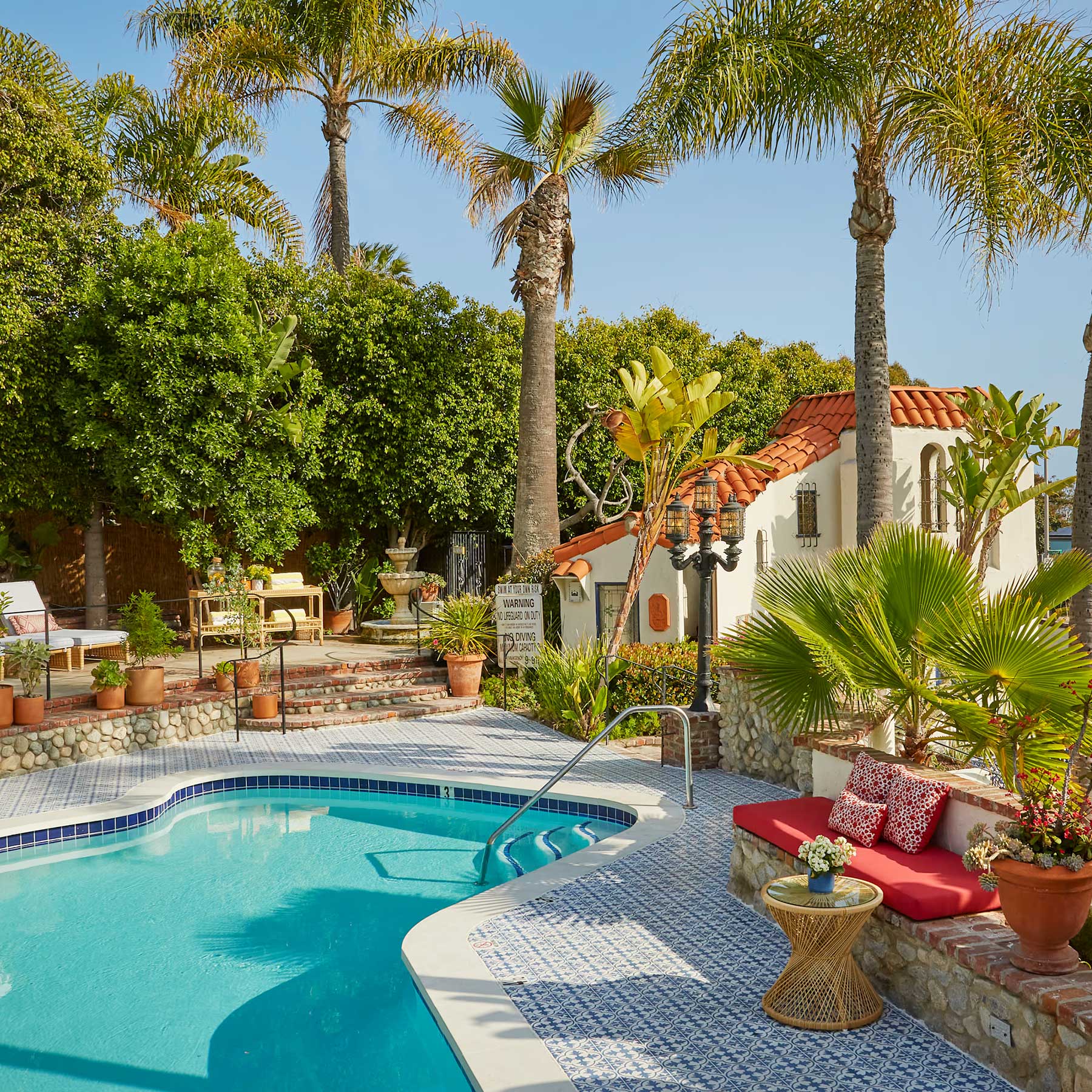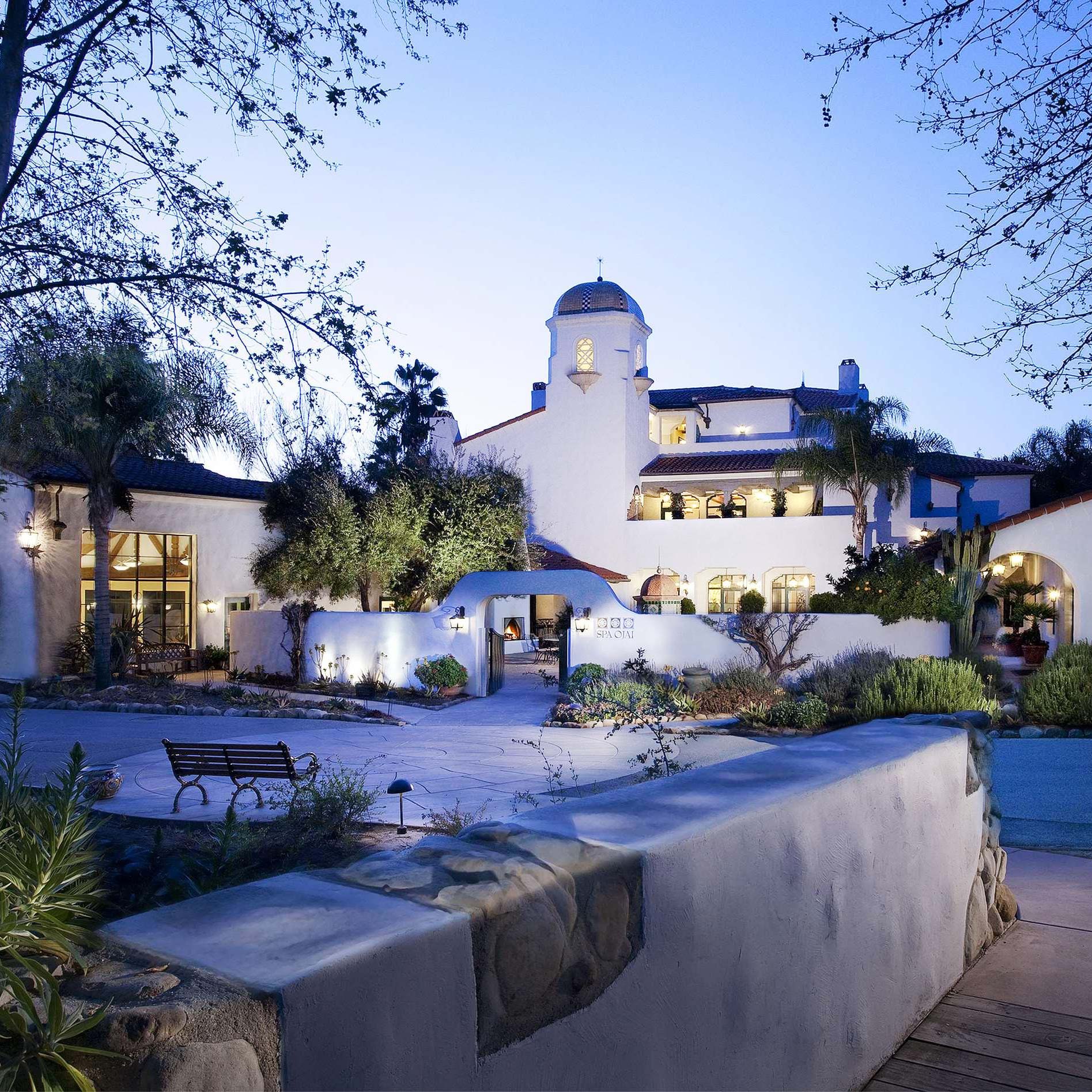
In the early 1900s, Spanish Revival architecture was all the rage in California, dominating building design in the state. These 13 hotels can help you feel the appeal.
The hallmarks of Spanish Colonial Revival architecture — white stucco walls, red tile roofs, arched entryways, wood ceiling beams — are all but synonymous with early 20th-century building design in California. It was during that period, a time of extreme growth in the state and increased interest in past colonialism nationwide, that the revival of the Spanish styles (including the four M’s: Mission, Mediterranean, Moorish, and Monterey) battled with Art Deco, Tudor, and Craftsman for local dominance. It says something about the diversity and industriousness of California that all of those disciplines, and eventually Modernism, have a strong foothold in the state.
But given California’s long Hispanic history, Spanish Revival feels particularly appropriate. Especially at this moment in time, when design trends are reaching back for the type of tactile warmth and authenticity provided by the style’s exposed wood, rough-hewn walls, Talavera tiles, and Kiva fireplaces. Below, we’ve identified a baker’s dozen of hotels where you can experience variations of Spanish Revival, alongside some top-shelf hospitality. Mission accomplished.
La Serena Villas
Palm Springs, CA, USA
Mid-century modernism is far from the only style in Palm Springs. La Serena Villas is the latest transformation of a 1933-vintage Spanish-style hotel, and while its new owners have thoroughly updated it for the boutique-hotel era, they’ve kept its inspiration intact — you’d be hard pressed to find a lovelier example of colonial-contemporary architecture and design.
Rancho Valencia Resort
San Diego, CA, USA
Just north of San Diego, a few miles inland from Del Mar, is the Rancho Valencia Resort, a quiet retreat in a private canyon near the affluent community of Rancho Santa Fe. Accommodations are scattered about the grounds, hacienda-style, with one or two suites to each casita. Suites feature cathedral ceilings, hand-painted tiles, fireplaces, and plenty of space.
The Ritz-Carlton Bacara
Santa Barbara, CA, USA
With 358 rooms and suites and a spa that could be conservatively described as “massive” (42,000 square feet), the Ritz-Carlton Bacara verges on luxury overkill. The style is inevitably Spanish, all whitewash and tile roofs, and the buildings hug the ground, sprawled like a village, which lends a surprising degree of intimacy to such a palatial hotel.
Hotel El Roblar
Ojai, CA, USA
Ojai’s longest-standing hotel (established 1919) has been restored to its former glory and reopened as a 50-room boutique. El Roblar’s was a sensitive restoration, retaining the property’s Spanish Revival architecture, including the Mission-style entry archway and the lobby’s stone fireplace, and added in design elements that pay homage to the Ojai Valley.
Ingleside Estate
Palm Springs, CA, USA
This Rat Pack–era institution is Spanish Revival through and through, and while it’s been brought up to date, the atmosphere is still steeped in Old Hollywood romance. Rooms are elegant above all, with plenty of historical detail alongside the modern conveniences; and they’re all refreshingly unique, owing to the twists and turns of the existing floor plan.
Drift Santa Barbara
Santa Barbara, CA, USA
The building that contains Drift Santa Barbara is a beautifully renovated example of Twenties Spanish architecture, in keeping with the picturesque local style. All the more surprising, then, that its stylish interiors are so beautifully minimalist, a masterful blend of simple clean lines and warm, richly textured organic materials.
The Paramour Estate
Los Angeles, CA, USA
This 1920s estate began its life as a Spanish/Mediterranean Revival mansion for a now-forgotten silent-film star. Later it was a girls’ school, later still a convent. When interior designer Dana Hollister bought it, it became something arguably more unique: part film set, event venue, dream house for Hollister herself, and finally, unforgettably stylish hotel.
Villa Royale
Palm Springs, CA, USA
Some mid-century Palm Springs hotels have thoroughly reinvented themselves for the boutique-hotel era, but not Villa Royale. Make no mistake, it’s been renovated, expanded, and brought quite up to the latest luxury-boutique standard, but the Spanish-style architecture is still very much intact, updated with street art–inspired murals and bold contemporary graphics.
Ojai Valley Inn
Ojai, CA, USA
Don’t let the word ‘inn’ fool you—the Ojai Valley Inn isn’t some rustic little bed and breakfast, but a secluded and spectacular resort, a 1920s Spanish Colonial revival-style compound sprawling across several hundred acres of a wooded mountain valley that’s long been a favorite getaway for refugees from the bright lights of Hollywood.
Rancho Caymus Inn
Rutherford, CA, USA
California’s wine country is full of architectural homages to Europe, and this one, erected in the 1980s by salt heiress Mary Tilden Morton, is a hacienda-style tribute to the Spanish countryside, built from reclaimed 19th-century timber. As a luxury boutique hotel, Rancho Caymus Inn remains somewhat intimate, weighing in at a mere 26 rooms and suites.
The Stavrand
Guerneville, CA, USA
From the outside the Stavrand is quaint almost beyond belief, a Twenties Spanish Revival landmark in the storybook locale of Guerneville. Inside, though, the fruits of a 2021 renovation are apparent: without sacrificing historical charm, the architects have brought it subtly up to date, and the result is a warm, bohemian, slightly utopian vision of Californian life.
Palihouse Santa Barbara
Santa Barbara, CA, USA
Each of the Palisociety hotels is subtly unique, embracing each neighborhood it calls home, and Palihouse Santa Barbara is no different. Here you’ll find vintage-inspired, tweedy-yet-sunny décor and an elegantly casual atmosphere, all within a Spanish Colonial Revival compound that features an exceedingly delightful Mediterranean-style garden courtyard.
Casa Laguna Hotel & Spa
Laguna Beach, CA, USA
To call Casa Laguna a hotel might be overstating matters a bit. With just twenty-two units in a historic Spanish Revival, it’s slightly larger than the archetypal bed and breakfast, but plenty of similarities remain, given the insular nature of the accommodations, the quiet garden courtyard, and a breakfast that’s got something of a national reputation.

Mark Fedeli is the hotel marketing and editorial director for Tablet and Michelin Guide. He’s been with Tablet since 2006, and he thinks you should subscribe to our newsletter.


